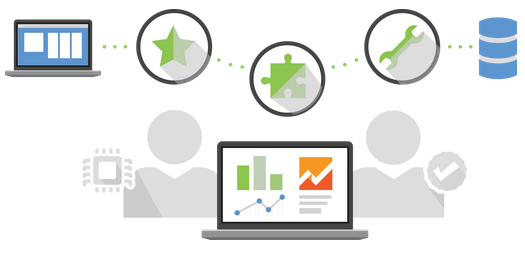Cross-posted on the Inside AdMob Blog
Since March 2014, Google Analytics has been fully available in AdMob, and now app developers are increasingly seeing results by combining data from both platforms. Here’s one story that illustrates the power of AdMob and Google Analytics together.
Passion for languages and learning
Jason Byrne, and business partner Robert Diem, are passionate about making a difference in education. They came together during their time as professors in Japan to found Eltsoft LLC, a company that builds mobile language learning apps for iOS and Android. Together, they started creating a series of fun tools that allow users to study whenever they want, wherever they are.
Global expansion
Their most popular app is English Grammar, which has been downloaded by more than a million people looking to sharpen their English-language skills in nearly 120 countries.
All of the company’s apps are available for free or as paid versions. To increase revenue, they chose AdMob to earn money from the free versions of their apps with advertising. “AdMob monetization is central to our success because it delivers high-quality, appropriate ads to our audience in their native languages, wherever they live,” says Jason.
The Google Analytics data within AdMob helped them understand more about their users. "Our app, English Grammar, has users from all around the world, so we turned to data from Google Analytics and AdMob to understand which languages we should consider for localization. For example, we knew we had to prioritize German and French, but we discovered other languages that we didn't expect, such as Russian and Japanese."
A data-driven approach to marketing
Eltsoft uses data to focus their marketing campaigns and assess where to use their resources most effectively. “Google Analytics keeps making campaign analysis simpler and clearer,” Jason says. “Data from various sources - Google Analytics and Google Play, for instance - are now all in one place. That helps me understand what’s happening with our ad campaigns.”
While data analysis helped Eltsoft validate some of their hypotheses, it also uncovered opportunities according to Jason: “The greatest takeaway for me is that the results are never really what I expect. I am often surprised. Analytics has given us great insights into who our users are, and has provided a very important lesson in the value of surveying our user base. Our simple assumptions are often inaccurate.”
Replicating successful strategies
Eltsoft has developed a way to calculate the value of users by using a combination of AdMob metrics (like ad request values) and Analytics metrics (like user counts and sessions per user). Having Google Analytics in AdMob has unlocked such analysis because the data is available in the same interface.
As a result, Eltsoft can now understand what works best for their users. “For example, we’ve made changes to our apps, and Analytics has really helped us to track the effectiveness of those changes. I would say six months ago, that our success was a mystery. The data said we were doing well, but the whys were not clear. Therefore, we couldn’t replicate or push forward. But today, we understand what’s happening and can project our future success. We have not only the data, but can control certain variables allowing us to understand that data.”
“Google Analytics data is literally a goldmine,” says Jason.
If you want to learn more about how Eltsoft is using Google Analytics and AdMob, download the full case study.
Want to learn how to get the most from Analytics in AdMob? Sign up for our free online course, Mobile App Analytics Fundamentals.
Posted by Russell Ketchum, Lead Product Manager, Google Analytics for Mobile Apps












